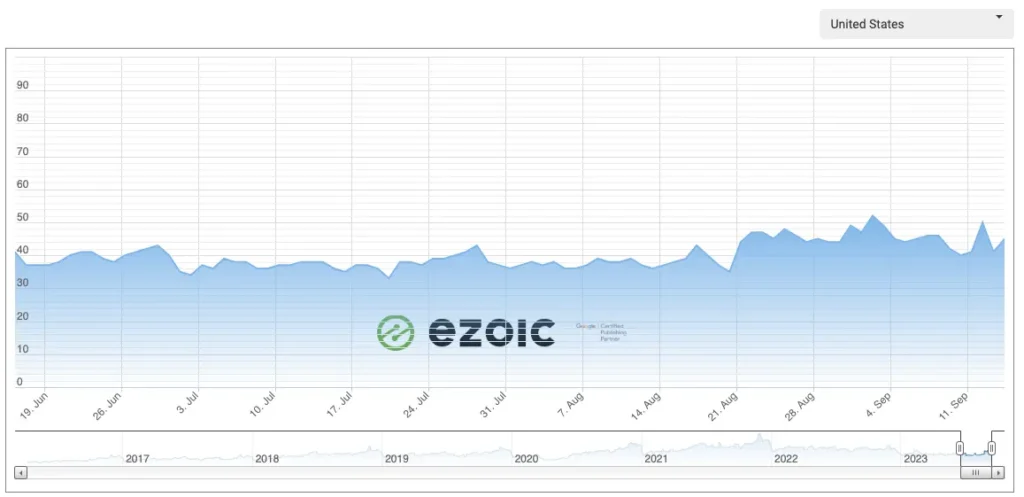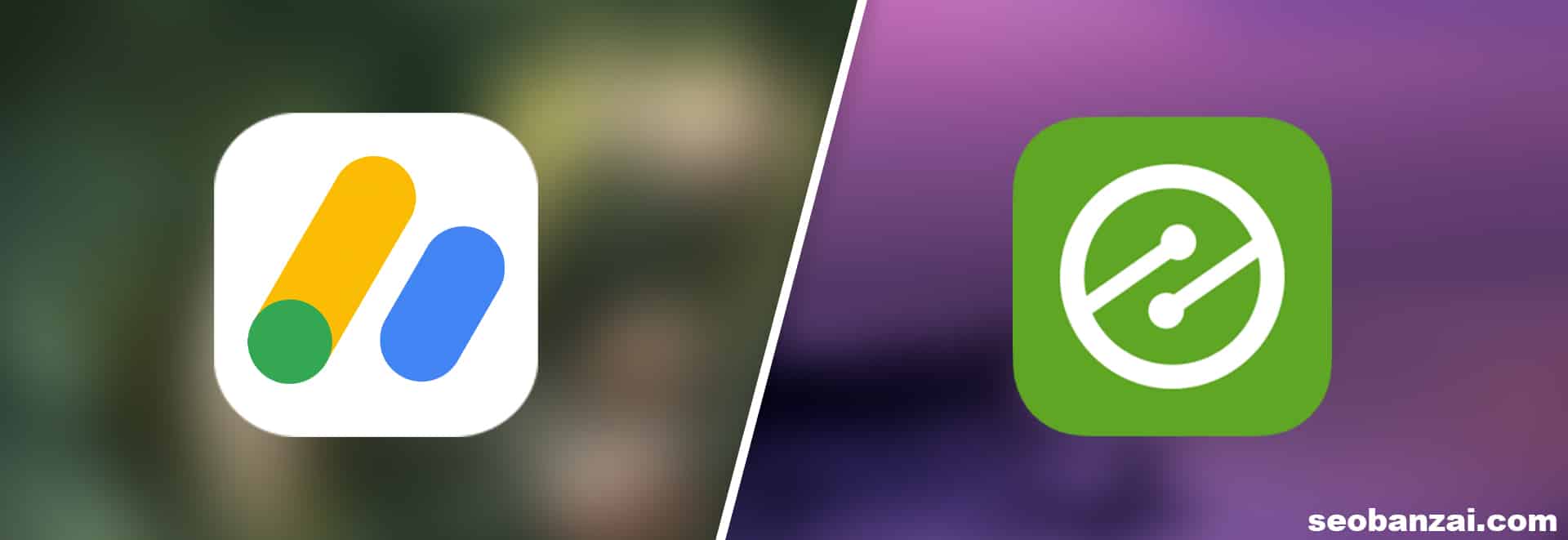The digital landscape has evolved dramatically over the past decade, offering countless opportunities for website owners and publishers to monetize their online presence. Two of the most prominent players in the field of online advertising are Google AdSense and Ezoic.
Website owners and publishers grapple with the age-old question: Which one is better?
In this comprehensive article, we will delve deep into the Adsense vs. Ezoic debate, weighing the pros and cons of each platform while shedding light on key performance metrics such as CPM, EPMV, and CPC.
Understanding the Digital Advertising Landscape
Before we dive into the Adsense vs. Ezoic showdown, let’s establish a solid foundation by understanding the digital advertising landscape.
Digital advertising serves as the backbone of online monetization. It allows website owners and publishers to generate revenue by displaying ads on their websites. Advertisers pay website owners either for ad impressions (CPM), ad clicks (CPC), or ad engagement (EPMV).
What is CPM (Cost Per Mille)?
CPM, which stands for “Cost Per Mille,” represents the cost advertisers are willing to pay for a thousand ad impressions. This metric is essential for understanding how much revenue you can generate for every thousand times an ad is displayed on your website.
For example, if an advertiser is willing to pay $5 CPM, you’ll earn $5 for every thousand ad views.
What is CPC (Cost Per Click)?
CPC, or “Cost Per Click,” focuses on the number of clicks an ad receives. With CPC advertising, website owners earn revenue each time a visitor clicks on an ad displayed on their website.
The amount earned per click can vary widely depending on the niche, competition, and ad quality.
What is EPMV (Earnings Per Thousand Visitors)?
EPMV, or “Earnings Per Thousand Visitors,” is a more comprehensive metric that takes into account both CPM and CPC earnings.
It measures the revenue generated for every thousand visitors to your website. EPMV provides a holistic view of your website’s monetization performance, accounting for both ad impressions and clicks.
What is Google AdSense?
Google AdSense, often referred to as the gold standard of online advertising, has been a go-to choice for website owners and publishers for years. Let’s delve into the pros and cons of using Google AdSense.
Pros of Google AdSense
1. Trustworthiness and Reliability:
One of the most significant advantages of using Google AdSense is its credibility. Google is a global tech giant, and AdSense has a strong reputation for reliable payments and fair practices.
Website owners can trust that they will receive their earnings consistently.
2. Ad Quality
Google AdSense excels in delivering high-quality ads that are relevant to the website’s content and the user’s interests.
This often leads to better user experiences and higher engagement rates.
3. Vast Advertiser Network
Google AdSense connects publishers to a vast network of advertisers, increasing the potential for higher CPM rates. The competition among advertisers can drive up the price they are willing to pay for ad space on your website.
4. Easy Integration
Integration of Google AdSense into websites is relatively straightforward. Google provides a user-friendly interface and extensive documentation to help publishers get started quickly.
Cons of Google AdSense
1. Stringent Policies
Google AdSense enforces strict policies, and a minor violation can result in an account suspension or termination. This can be a source of frustration for website owners.
2. Revenue Share
Google takes a significant portion of the revenue generated through AdSense, typically around 32%. While this is a standard practice in the industry, it can still be seen as a drawback for some publishers.
3. Competition
The popularity of AdSense means that there is fierce competition for ad space. This can lead to lower CPM rates for websites with less traffic or in niche markets.
The Emergence of Ezoic
Ezoic, a relative newcomer in the digital advertising arena, has gained prominence for its innovative approach to website monetization. Let’s explore the pros and cons of using Ezoic.
Pros of Ezoic
1. Ad Optimization
Ezoic specializes in ad optimization through artificial intelligence (AI). Its platform uses machine learning algorithms to test and display ads that maximize revenue.
This can result in significantly higher EPMV for websites.
2. A/B Testing
Ezoic allows publishers to conduct A/B tests on various ad formats, placements, and sizes. This data-driven approach enables website owners to fine-tune their ad strategy for optimal results.
3. Diverse Revenue Streams
Ezoic offers various revenue streams beyond display ads, including affiliate marketing, sponsored content, and subscription-based models.
This diversification can help publishers reduce reliance on traditional advertising revenue.
4. Data Insights
Ezoic provides detailed data insights through their Big Data Analytics, giving website owners a deeper understanding of their audience and ad performance. This data-driven approach empowers publishers to make informed decisions.
Cons of using Ezoic
1. Learning Curve
Ezoic’s AI-driven approach may be overwhelming for beginners. Publishers may need time to grasp the platform’s full potential and optimize their ad strategy effectively.
2. Revenue Share
Similar to AdSense, Ezoic also takes a percentage of the revenue generated. The exact share varies depending on the plan chosen, with premium plans offering lower revenue shares.
3. Quality Control
While Ezoic optimizes ad placements, it may not always guarantee the same level of ad quality as Google AdSense. Publishers must monitor ad quality to ensure a positive user experience.
Comparing Metrics – CPM, EPMV, and CPC
To determine which platform is better for your website, it’s crucial to compare these platforms using essential metrics.
CPM Comparison:
CPM is a key metric to assess ad revenue potential. Google AdSense, with its vast advertiser network, often offers competitive CPM rates. However, Ezoic’s AI-driven optimization can lead to higher CPM rates over time, particularly for websites with substantial traffic.
EPMV Comparison
EPMV is an excellent metric to evaluate overall performance. Ezoic’s AI optimization can lead to higher EPMV, especially when publishers take advantage of A/B testing and data-driven insights. AdSense’s EPMV can also be competitive, but it may require more manual optimization.

CPC Comparison
If your website generates revenue primarily through ad clicks, CPC becomes a crucial metric. AdSense generally has a higher CPC due to its ad quality and relevance. Ezoic, while still competitive, may not always match AdSense’s CPC rates.
Making the Decision – Adsense or Ezoic?
The choice between Google AdSense and Ezoic ultimately depends on your website’s specific needs and goals.
When to Choose Google AdSense:
- If you prioritize trustworthiness and reliability.
- If your website is content-focused and not traffic-heavy.
- If you prefer a straightforward, user-friendly interface.
When to Choose Ezoic:
- If you seek advanced ad optimization through AI.
- If you have a significant amount of traffic and are looking to maximize revenue.
- If you are open to diversifying your revenue streams beyond traditional display ads.
Our verdict: Ezoic usually earns you much more money than Adsense for the same amount of traffic. That being said, Ezoic does tend to slow down your website quite a lot, it has a larger learning curve, may need you to fiddle with your DNS, Cloudflare, or Nameserver settings for integration, and can take up to 2 weeks to get approved.
Even so, Ezoic is better than Adsense in almost any case.
Final thoughts
In the Adsense vs. Ezoic battle, there is no one-size-fits-all answer. Both platforms have their merits and drawbacks, and the choice should align with your website’s specific objectives and audience.
Understanding metrics like CPM, EPMV, and CPC can help you make an informed decision and optimize your monetization strategy for long-term success in the ever-evolving world of digital advertising.
